iPhone 13 Pro Max Astrophotography,
Asteroid 17025 Pilachowski
Posted: 30 October 2021
On my previous report, I mentioned that my prototype LiDAR sensor cover for my new iPhone 13 Pro Max worked but was not totally effective at blocking the red illumination from the sensor. I came up with a better prototype design, although a little more difficult to create. I used a piece of thin cardboard (more sturdy than a piece of paper). I cut to the desired size and then marked the positions of the three camera lens (left photo). Next I drew circles approximately where the lenses would be (right).
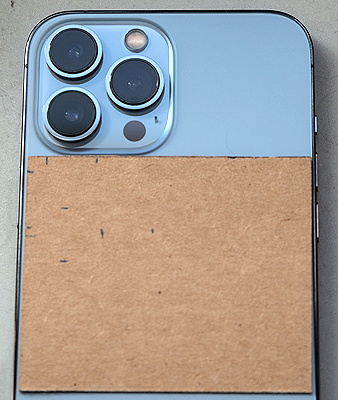
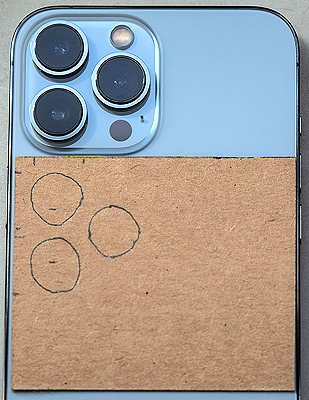
After cutting out the holes and trimming to match the lenses, I ended up with this prototype, held on with a clip.
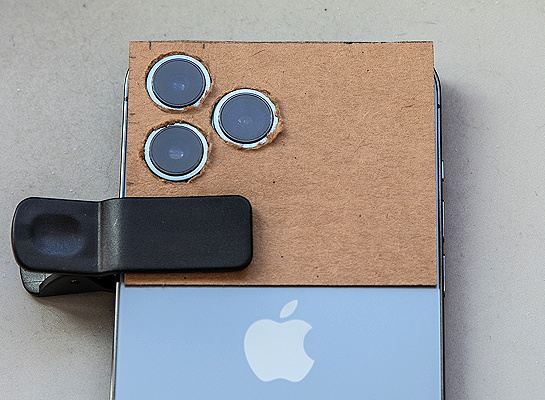
It should be more effective at blocking the light from the LiDAR sensor. I tested it on this session in the observatory.
|
Open: Friday, 29 October 2021, 1807 MST Temperature: 83°F |
Session: 1684 Conditions: Clear |
Equipment:
12" f/8 LX600 w/StarLock
2" 24mm UWA eyepiece
2" 30mm eyepiece
Camera:
iPhone 13 Pro Max
D850 DSLR
1811 MST: LX600 ON, StarLock OFF, High Precision OFF.
Viewed Venus, Saturn, then Jupiter, 102X.
I relaxed on the observatory patio bench while waiting for the sky to get darker.
1830 MST: back inside the observatory. Viewed M11 (Wild Duck Cluster), 102X and 81X.
Mounted the iPhone 13 Pro Max on the 30mm eyepiece using the Levenhuk adapter. The new LiDAR cover prototype was in place over the LiDAR sensor.
Imaged M11 (Wild Duck Cluster) using NightCap Camera (Long Exposure, Light Boost, ISO 6400, 1sec, 1 minute, 1X lens), StarLock autoguided.

LiDAR cover worked!
I then prepared to photograph a pass of the Chinese Tiangong space station with three astronauts onboard. Mounted the iPhone 13 Pro Max on a camera tripod using the Spectrum Telescope adapter. The photo shows Tiangong passing through the center of the frame. Another satellite is at the lower right and an airplane at the lower left.
NightCap Camera (ISS mode, ISO 23334, 65 seconds, 1X lens)

The next photo shows Tiangong passing through the Milky Way. (The 8X telephoto lens is casting the shadow.)
Camera (Night Mode, 30 seconds, 0.5X lens)
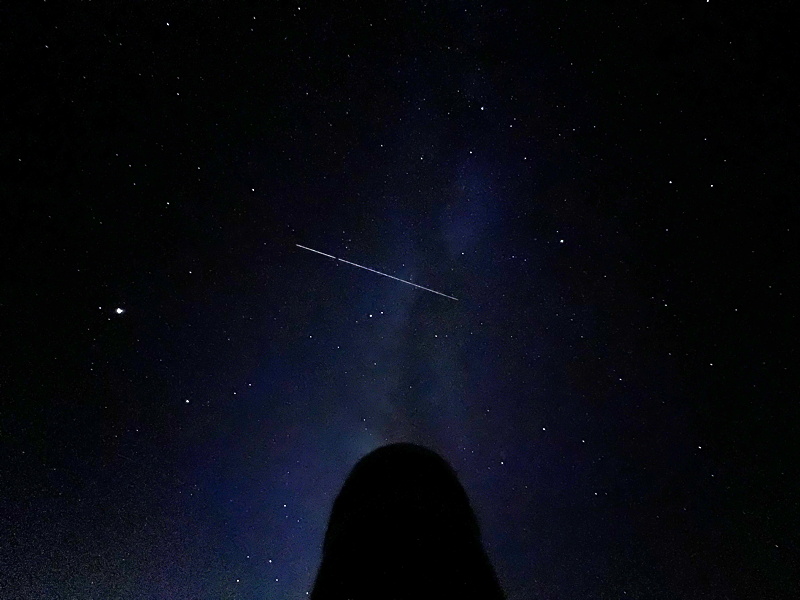
I then imaged (untracked) the Andromeda Galaxy using the 8X telephoto lens, but the result was not very good.
Long Exposure, Light Boost, ISO 32000, 11 seconds, 1X + 8X lenses)

1940 MST: returned to the 12" telescope, mounted the iPhone on the 30mm eyepiece, and began doing StarLock autoguided afocal 81X images of several Messier Catalog open star clusters. Used the LiDAR cover. Images taken with NightCap Camera (Long Exposure, Light Boost, ISO 32000, 1sec, 1 minute, 1X).
M26

M29

M39

M52

M103

Viewed M103 (open cluster), 102X.
I then relaxed on the bench for a few minutes.
I mounted the D850 DSLR at prime focus + focal reducer, focused on the star Hamal, and locked the 12" mirror.
Used SkySafari 6 Pro on the iPhone 13 Pro Max to GOTO Asteroid (17025) Pilachowski, Mag. +17.4. Dr. "Caty" Pilachowski is the Chair of the Indiana University Department of Astronomy. I first met her a few years ago during one of the special IU Alumni visits to Kitt Peak National Observatory to look through the WIYN 3.5m telescope.
2042 MST and 2142 MST: took StarLock autoguided images of Asteroid Pilachowski, 5 minutes, ISO 6400. In between imaging I relaxed on the observatory patio bench. Seeing deteriorated for the second image.


Two unidentified asteroids are also visible in the animation. One at the upper left and the other to the right of Asteroid Pilachowski.
I fell in love with asteroids as an undergraduate astrophysics student at Indiana University. In 1966, as a freshman, I worked on the IU Asteroid Program. I was on the Program for four years and even worked there full-time during the summer after graduation in 1970. I was one of several students who would measure star and asteroid positions on 8x10 inch photographic glass plates using the Gaertner Measuring Engine.
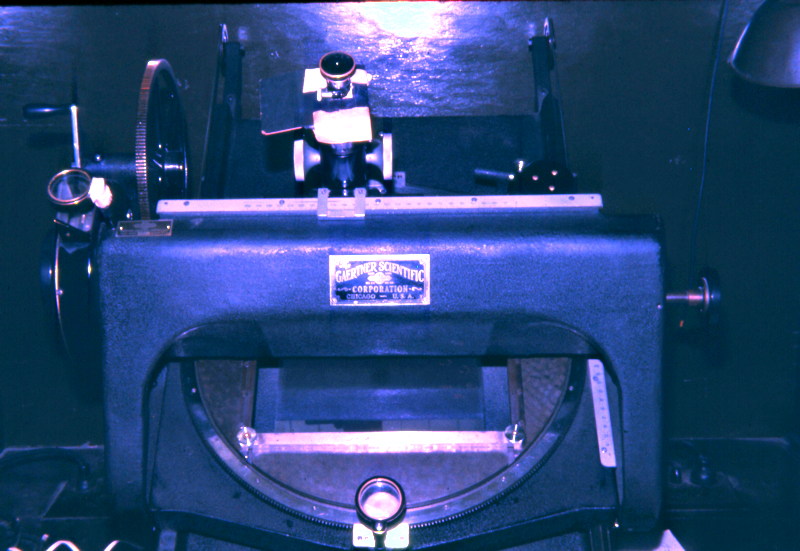
The plates were taken using one of the telescopes at Goethe Link Observatory, which was operated by IU at the time. I visited the Observatory only once as a student and that was a very short visit.
Photographing asteroids that are named for people I know and places that have meaning to me is a passion of mine. See my Asteroids & Dwarf Planets album.
2156 MST: LX600 OFF.
When I closed the observatory I noticed I had a visitor in the observatory.

2215 MST: took a Sky Quality reading and reported the result to Globe at Night.
|
Close: Friday, 29 October 2021, 2217 MST Temperature: 65°F |
Session Length: 4h 10m Conditions: Clear, breezy, SQM 21.09 |
Comments are welcome using Email. Twitter users can use the button below to tweet this report to their followers. Thanks.
Cassiopeia Observatory Home Page
Copyright ©2021 Michael L. Weasner / mweasner@me.com
URL = http://www.weasner.com/co/Reports/2021/10/30/index.html
